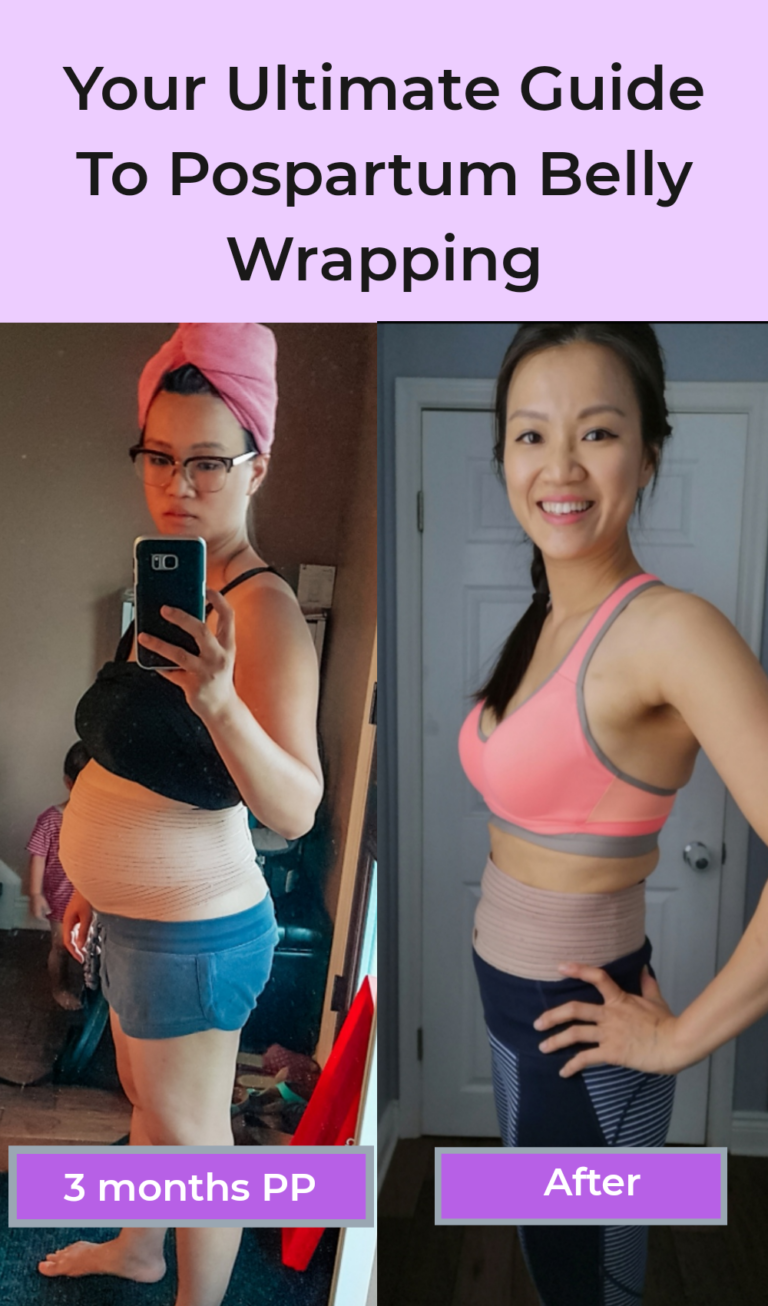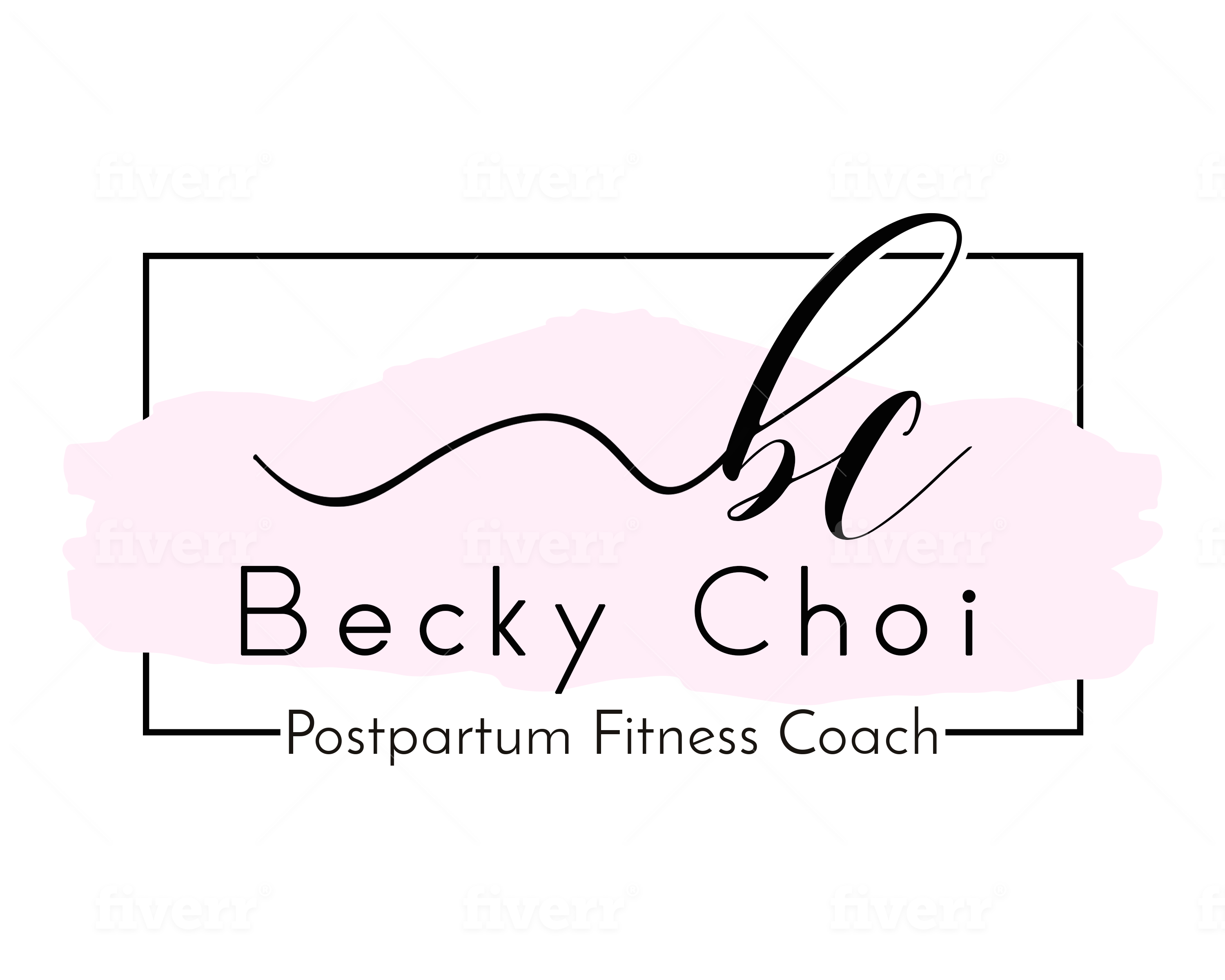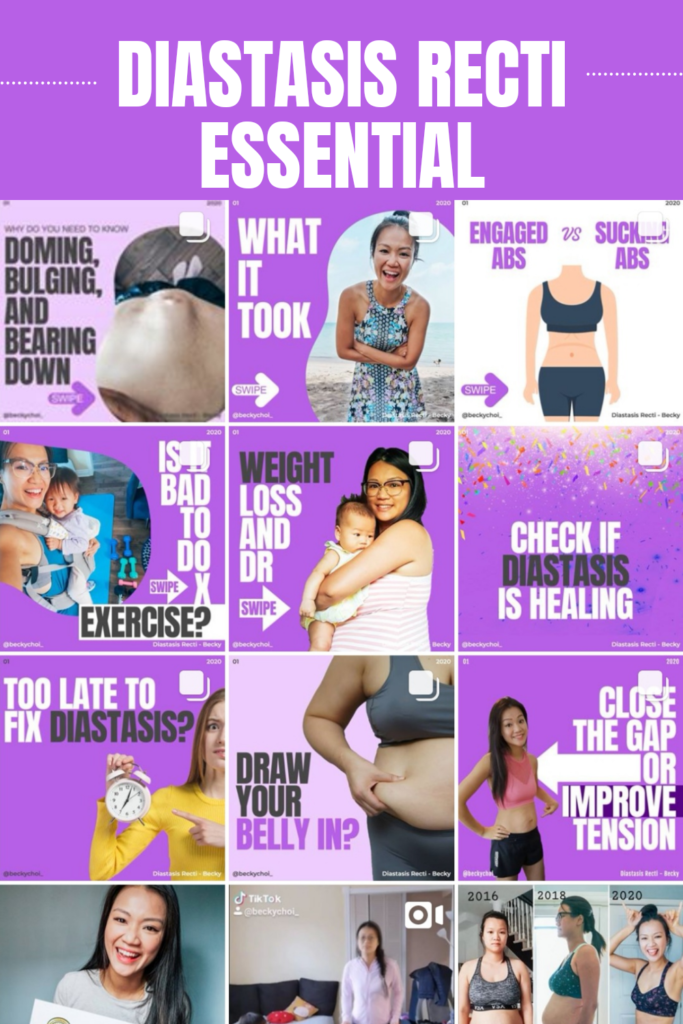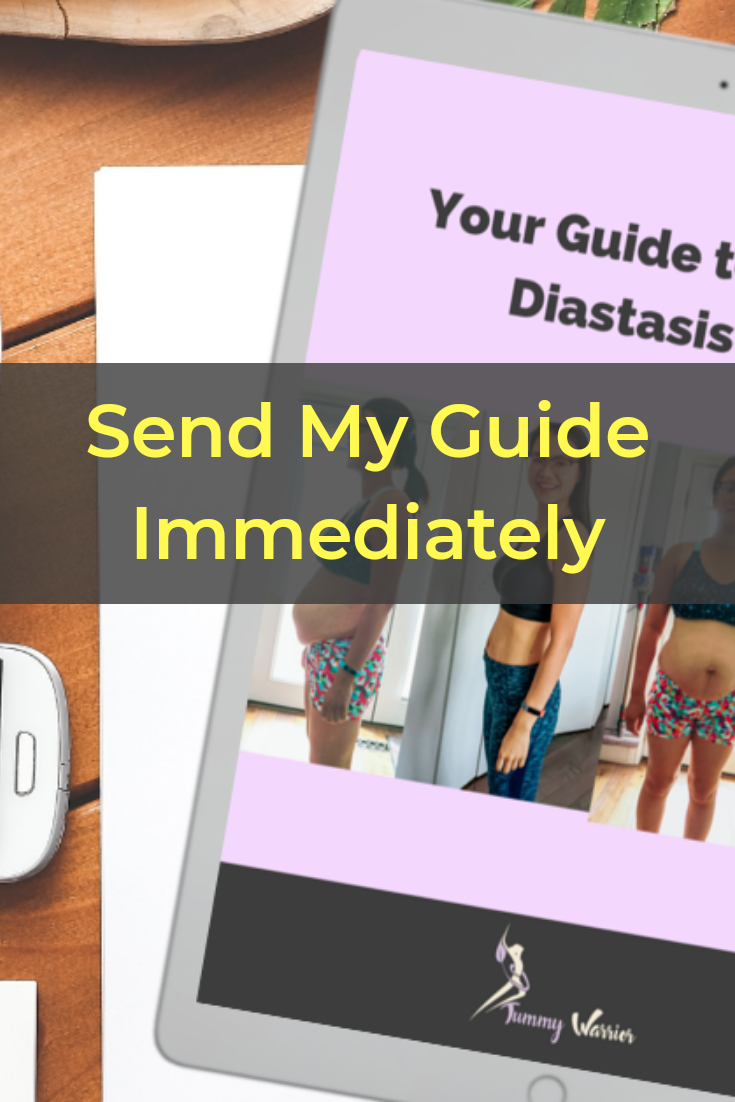Your ultimate guide to postpartum belly wrapping for new moms or moms with diastasis recti
If you are wondering whether you should wear a belly wrap as a new mom and whether it is okay to wear an abdominal binder when you have a diastasis recti.
Or you may be wondering if it is too late for you to wear one, or you simply want to find a wrap that is good for postpartum belly.
In this post, I’m going to show you and talk about all of that. I’m going to talk about the benefits of wearing an abdominal binder and show you what I wear, how I wear it, and when not to wear the abdominal binder.
So if you’re interested then keep on reading
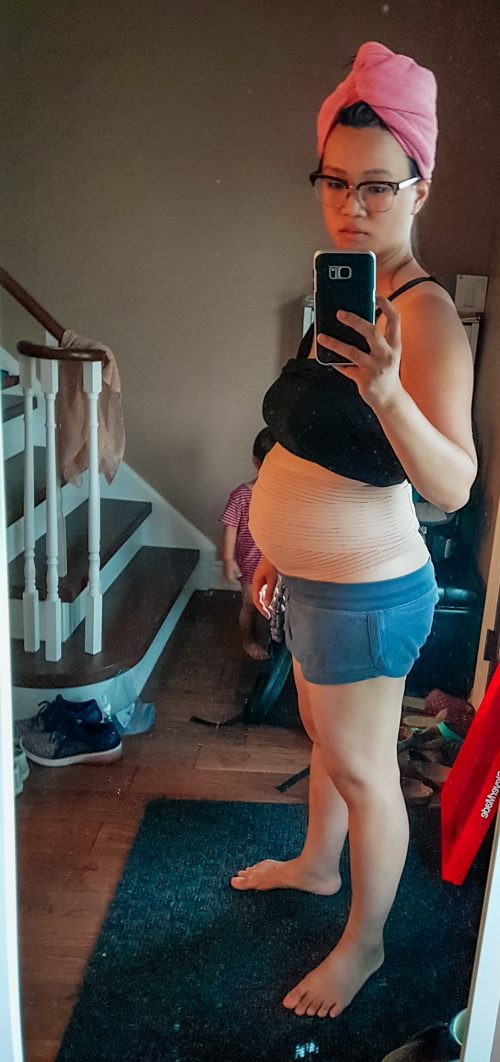
There are a lot of controversies around wearing a postpartum belly wrap after giving birth to a baby. There are generally threes reasons for this argument.
1) If you’re wearing a postpartum belly binder, it’s going to put downward pressures to your pelvic floor which may make you leak or lead to a pelvic organ prolapse
2) It’s going to hinder you from expanding and contracting your belly.
3) It will restrict your movement which slows down the natural recovery of the core muscles.
My experience about wearing postpartum belly wrap
I have a severe diastasis recti and my stomach dome out or make this really weird shape whenever I move around or pick up my baby. These movement were unavoidable, and I didn’t know how to stop my stomach from not doming.
So when my physiotherapist recommended the belly wrap to me, I didn’t hesitate because I want my core to be secured and not flapping up and down with me when I am doing chores.
With that being said, I truly believe my belly wrap has sped up my diastasis recti recovery and give me an instant flatter belly look.
(This picture below was taken after I have lost weight, but you can still see the stomach hanging out on the left. but with the help of the postpartum belly wrap, my belly looks so much better. )
But do I recommend you wearing one years or months after postpartum or after you have gain some functionality in your core? – keep reading.
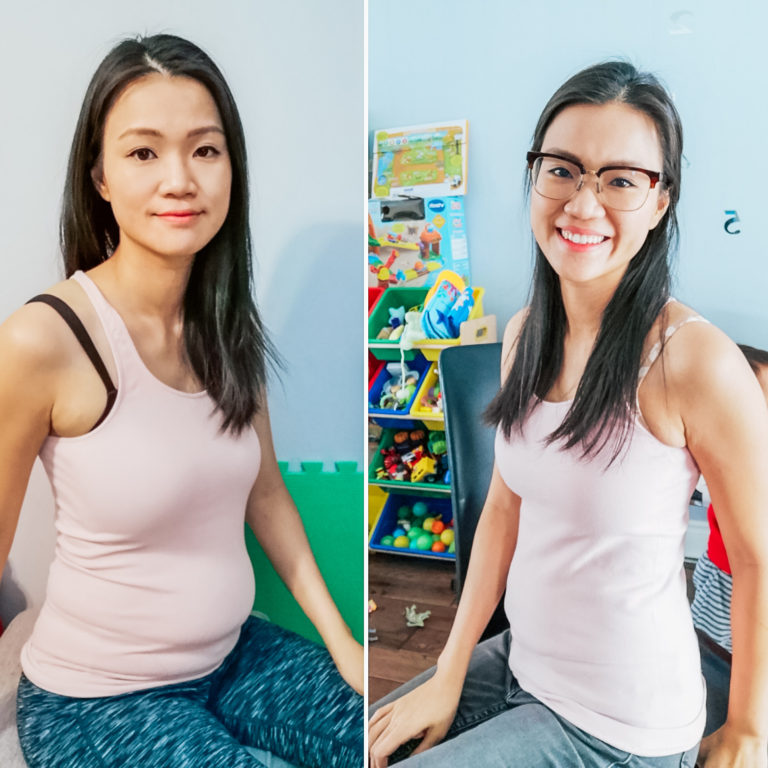
Who should wear a postpartum abdominal griddle?
*I use griddle/ binder/ wrap interchangeably, but they all mean the same thing.
If you are a new mom or a mom with a severe diastasis or a mom with a non-functioning core, meaning you cannot control your core from doming or making a coning shape, or you cannot engage your core with ease.
You are generally seeing a lot of pressure coming out in the mid-line of your abdominal separations. And a lot of trigger movement you do are unavoidable.
You see, it’s not whether you are 1 weeks, 6 months or 6 years postpartum, it is whether your core is functioning or not, does it need a little bit of support, do you have a postpartum abdominal separation which is very common?
However,
If you have gained a functioning core, you can control your core and engage your pelvic floor with ease. You have been exercising and you do not generally see doming in the middle of your stomach. Then you are better off without the postpartum wrap because you need to let your core muscle to do its work so you can finally get a flatter stomach.
The wrap can only get you so far, but you have to finish the rest of the healing journey yourself.
A few words for newer mom,
If you have no complication from your delivery and if your c-section stitches are healing well, then you can start wearing the belly wrap within the first week of delivery. This method is commonly used in many Asia country as a tradition which is called mother roasting.
The idea here is to keep the new mom stomach warm, it wraps to prevent chill air going through the belly button making the mom ill. If the mom is ill, then the world is ending!
But it is also to help mom get back in shape faster, that’s how celebrities go back on the stage or TV so quickly after having their babies.
Benefits of wearing a postpartum stomach wrap
1. Foster neutral body alignment
When you are wearing the correct abdominal binder, it’s going to help bring the alignments back neutral especially from your ribs to your hips. Because when we were pregnant, your ribs expand to accommodate the growing baby, your weight is mostly forward. Therefore, your bottom sticks out which make you an anterior pelvic tilt.
You back arches, making you very uncomfortable. This posture is not a good posture to heal your diastasis recti or strengthen your core muscle.
But if you’re wearing an abdominal binder, it’s going to put a little bit of a gentle pressure on your back and holding this in place. So you’re bringing your hip forward a little bit instead of tilting back.
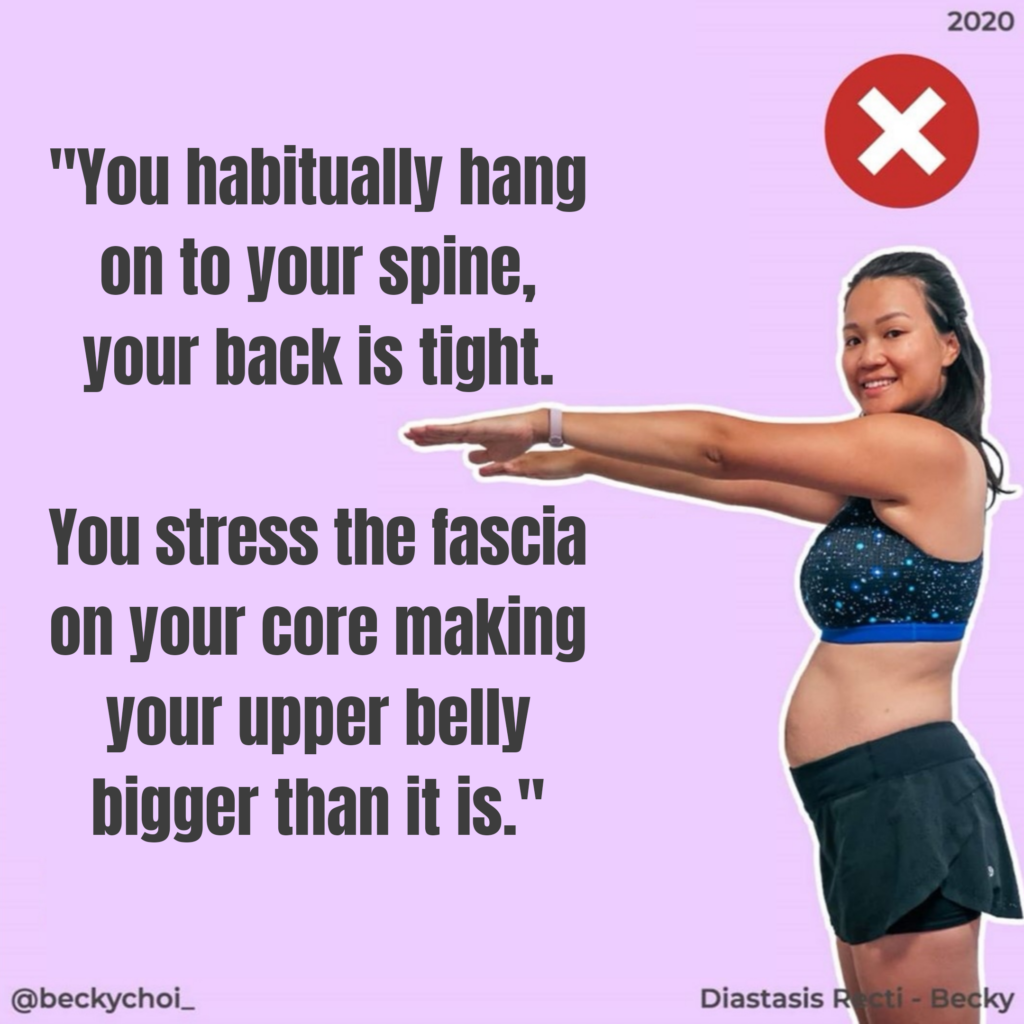
2. Support the healing of your core connective tissue
When you are wrapping your belly, it’s going to give you more confidence when you’re walking around here down the stairs, pushing the stroller, or even when you exercise. Your core is held in place.
When you get down on your knees and toes and you feel like your stomach is going to fall out, the abdominal binder is going to give you a little bit of a nudge and a little bit of pressure to fight against gravity.
3. It compliment your exercise routine
There are a lot of exercise you can pair up when you wearing postpartum binder. It’s important to know that you can still exercise incorrectly with the belly wrap on. But when you pair it up with exercise and do them consistently and execute correctly, magic will happen!
Are you wondering whether you have diastasis recti or abdominal separation or not?
Did you know that 100% of pregnant mom will have abdominal separation when carrying their baby to full terms. Approximately 30% of moms will still have this separation at 6 months postpartum. Let’s do a self-check and see if you have it.
You can check out this postpartum belly guide here
So let me show you the exact wrap I wore when I was 6 weeks postpartum with a severe diastasis recti. In this video, I will also show you what wrap I DO NOT recommend and how it is terrible for your postpartum body. I will demonstrate what that is so you can decide what wrap to buy for yourself, below in the video.
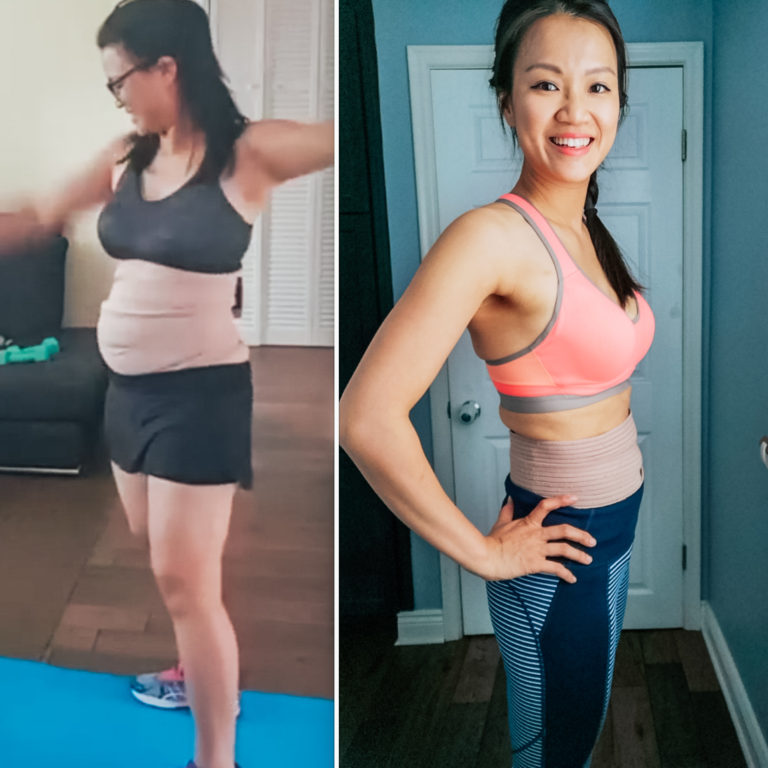
Different Types of Wraps
There a lot of products out there claimed to help you get in shape, and make you look good cosmetically underneath clothes. But you want to be extremely careful when it comes to choosing a wrap suitable to diastasis recti because we need to make sure it provides the support we need, and not unnecessary pressure.
Let’s explore the different types of belly binders on the market:
1. Corset
A corset is mostly a shaping garment. They are generally worn underneath clothing, so you will have a fuller bust and flatter stomach. It is usually one piece of fabric with the closure made with many metal hooks. Some of them require you to hook around the crotch area. A corset is not suitable for us. I can only imagine how confining it would be with all the hooks in the middle and the bottom.
2. Waist Trainer
Waist Trainer are wide, adjustable band that covers the middle of your midsection. You will most commonly see it in the gym, on celebrity trainers and personal trainers. They are often made of stiffer materials and may contain plastic and metal boning. Their purpose is to put firm compression on the waist so the individual sweat more and sucking in the abs more. This is also not suitable for us.
3. High Waist Shaper Undergarment
It is designed to wear as an underwear to help lift your butt, and as a tummy shaper. It is usually in nylon, and some have wire in it to provide extra firmness. The shaper underwear is a quickie. You will commonly find women wearing this type of undergarment, especially when they are wearing a tight fitted dress and top. It is suitable if your diastasis recti is mild or moderate.
4. Belly Wrap, sometimes referred as belly binder
Belly binder is generally a wide, adjustable and stretchable velcro band that covers your abdomen from your ribs down to the tops of your hips. It provides compression on a large area. You would tighten it with a velcro strap. This is what we will explore in this video below and demo you how some are horrible wrap and what is a good belly wrap.
You can fastforward to 4m 40sec and show you the first wrap put downward pressure on your belly and this can lead to many problems such as leaking and pelvic organs prolapses.
6 m 41 sec is the one I used since I was 6 weeks postpartum, and the belly wrap was recommended to my by my physiotherapist, do you see how this wrap is wrapping upward?
Bottom line is:
Not everyone needs a postpartum belly wrap and certainly not all postpartum made the same and some could be harmful for you and your organs.
Wearing a wrap is not determined by how many months or years you are in your postpartum, it should be determined by how weak your core muscles are and whether you can control the muscle with ease.
I would use caution if you are a new mom and definitely choose something that is a bottom-up approach wrap to help strengthen your core muscles and protect your pelvic floor.
I hope you learn something new from this post, and if you have mommy friends who aren’t sure if they need a postpartum binder, share this post with her.
And if you need help with your stubborn postpartum belly, check out my free resources on my Instagram @beckychoi_
